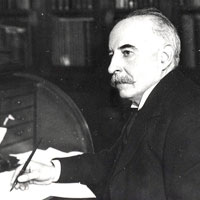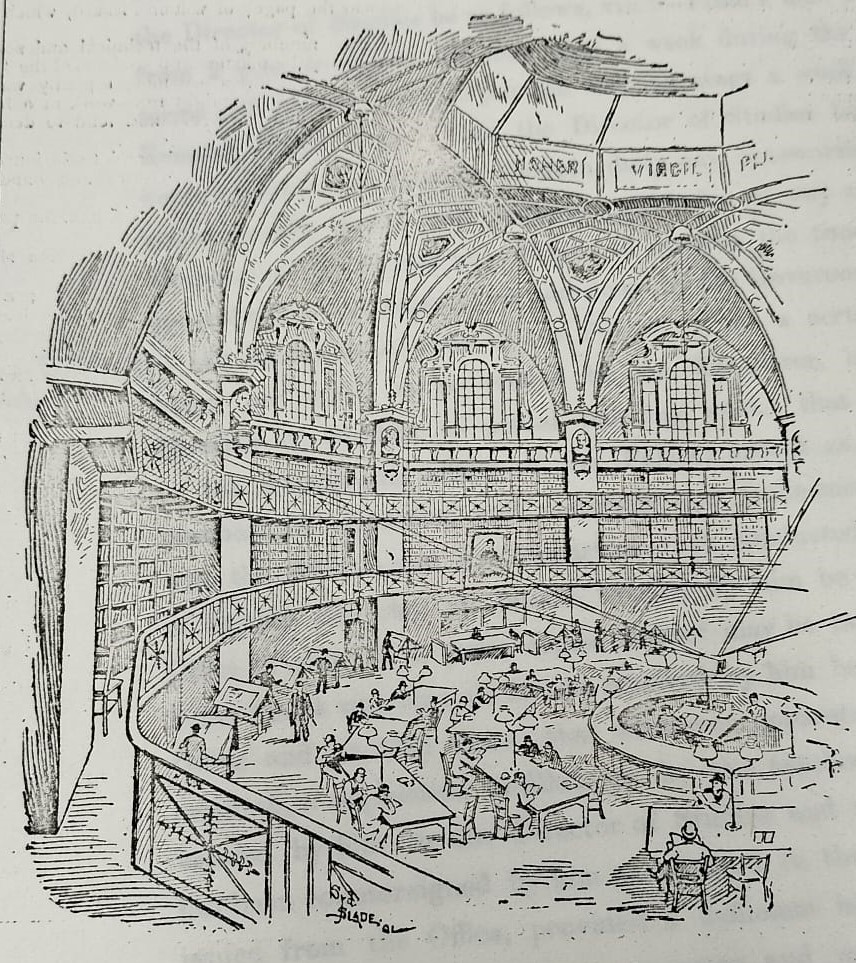Joseph Priestly Building

Photography: Norah Alghafis
The People's Palace The Queen's Building
Joseph Priestly is best known a British philosopher and chemist who is believed to have discovered oxygen and carried out some of the earliest experiments on the carbon cycle. He was born on 24 March 1733 and died on 6 February 1804.
Growing up, Priestly was educated to eventually become a minister in the Nonconformist churches and so, in order to gain the necessary experience, he spent most of his life preaching and teaching. He received a good education in languages, science, literature and philosophy and he began to question certain aspects of his religion – leading him to adopt Unitarianism.
Priestly’s interest in science had massively grown in 1765 after meeting Benjamin Franklin, an American scientist. He encouraged Priestly to publish his work titled The History and Present State of Electricity, with Original Experiments (1767). Within this, Priestly utilised history to indicate that progress in science relied on new facts rather than theoretical insights. This inspired many of his methods to experiment and where he discovered that charcoal conducts electricity, recognised the relationship between chemical change and electricity as well as anticipating the inverse square law.
Due to these experiments, he was elected as a member of the Royal Society of London in 1766 and his current investigations motivated him to conduct tests in other areas.
In 1767, whilst at Mill Hill Chapel in Leeds, Priestly began investigations into chemistry. He published multiple volumes and articles to describe his findings on “airs”. Priestly is known to have discovered multiple new gases, including: nitric oxide, ammonia and sulphur dioxide. He was known to take an unconventional approach when conducting investigations, for example, by utilising apparatuses in an unusual way and having unordinary methods, to be successful in his findings. In 1773, Priestly was awards the Royal Society’s Copley Medal – a prestigious award. His approach in conducting experiments eventually enabled him to isolate eight gases, including oxygen, whereas his predecessors often thought that there was only ‘one air’.
Priestly moved to Birmingham in 1780 after having accepted the position of preacher at the New Meeting House. He also became a member of the Lunar Society which was a prestigious group of gentlemen that lived in nearby areas and who incorporated the scientific and technological principles to solve problems that were commonly located in 18th century urban life. This was when Priestly developed a piece of equipment that resulted in carbonated water – something he assumed could give medicinal benefit to fevers such as scurvy. Despite it not being able to provide any benefit, this laid the basis for sparkling water in the near future.
Throughout Priestly’s life, his unconventional opinions often led him to become a victim to violence and controversy. He was a support of the American and French Revolutions which the English government and press considered seditious. In 1791, a mob had destroyed his house and laboratory in Birmingham. However, Priestly retreated to Hackney, London where his friend, Richard Price, a fellow philosopher, had a congregation. Priestly defends his anti-British government views in Letters to the Right Honourable Edmund Burke (1791).
Despite his defence, there was a growing conservative reaction to the French Revolution. In 1794, Priestly and his family decided to relocate to the United States and built a home in Pennsylvania.
Joseph Priestly died in Northumberland, Pennsylvania and he was respected by Thomas Jefferson – the third President of the United States.
Sources Used:
(No date) Internet encyclopedia of philosophy. Available at: https://iep.utm.edu/priestly/ (Accessed: 17 September 2023).
The discovery of oxygen and the chemical revolution of Joseph Priestley (no date) Encyclopædia Britannica. Available at: https://www.britannica.com/biography/Joseph-Priestley/The-discovery-of-oxygen-and-the-chemical-revolution (Accessed: 17 September 2023).
Joseph Priestley (2023) Science History Institute. Available at: https://www.sciencehistory.org/education/scientific-biographies/joseph-priestley/ (Accessed: 17 September 2023).
Other ways to explore Queen Mary College:
Information

The information page contains all the information that can be found on the virtual tour in one, easy to navigate, page.
People

The people page shows all the key figures mentioned throughout the tour, whose revolutionary work in their respective fields still assist in research today.
Stories

The stories page provides information about the Trust established between Westfield College and Queen Mary College.
Community

The community page provides an opportunity to learn more about notable events that have occurred in the Queen Mary University of London community.